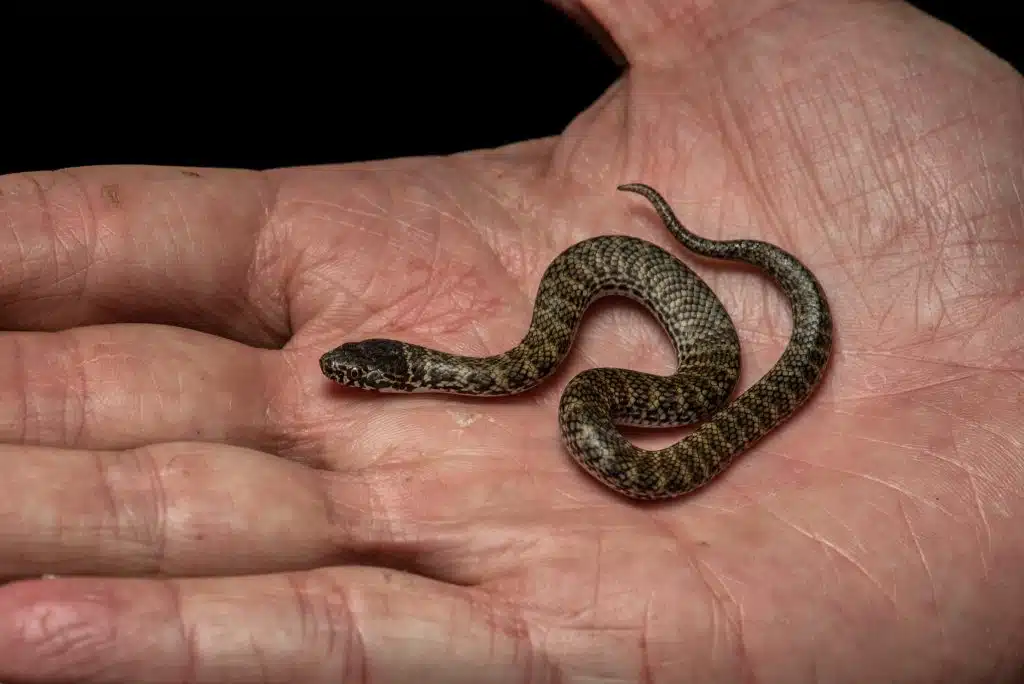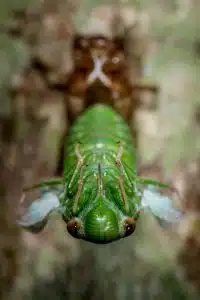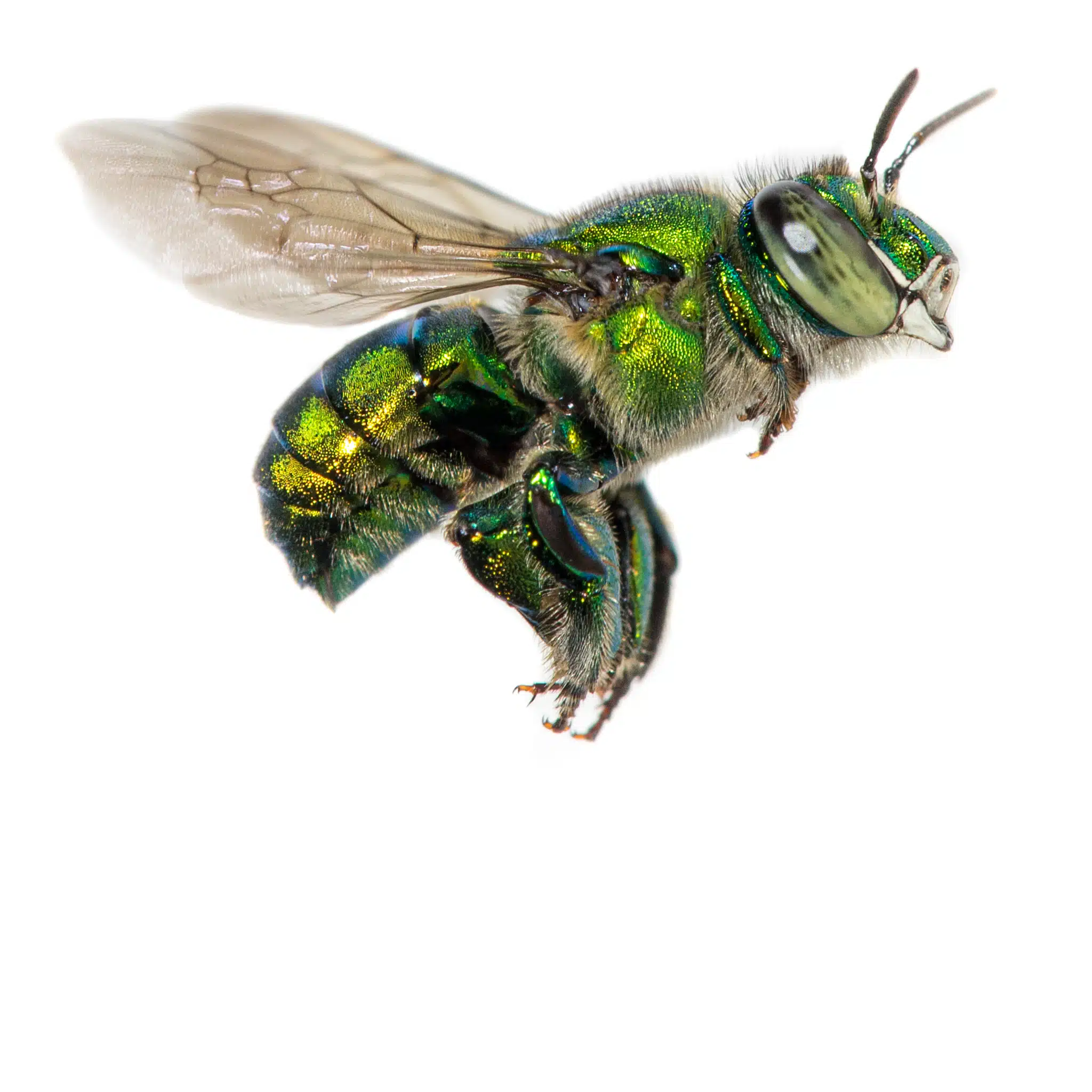Our Philosophy
and Life Overlooked
Most of Our Stakeholders Can Fit in the Palm of Your Hand
We like to say that most of our stakeholders could fit in the palm of your hand, and indeed they could, as over 95% of known animal species are that small or smaller. How odd, then, that the vast majority of animal life goes overlooked regarding scientific knowledge, popular understanding, and, hence, funding for conservation. How can this be?

As children we start out curious and engaged with the small creatures crawling, skittering, and springing around on our level; insects, reptiles, spiders, amphibians, and the like. Soon, however, popular culture teaches us to fear these companions. This is understandable given that we humans are relative giants of the animal kingdom who tend to notice things that are our size or larger. We are also more comfortable with animals with fur or feathers, two legs or four, and paired eyes that meet our own. Instead, small life often seems creepy with its scales, lack or over-abundance of legs, and too many eyes to connect with our own. Further, the smaller a species is the more patience it takes to understand, leading to a lack of scientific knowledge. And, this lack leads to popular misconceptions and myths, thus further fueling our fears. It’s an unfair spiral that we, The Biodiversity Group, work to break because we know that this smaller majority of life is hugely important to conservation.

As everyone knows, these small creatures are themselves food for larger animals, but they are also essential parts of ecosystems as pollinators, seed dispersers, soil generators, and waste processors. However, we lack much baseline data on these animals. We only recently learned that one third of all extant frog and salamander species a fifth of reptiles are threatened with extinction. Such assessments are still to be done on nearly all invertebrates, but the picture looks worrying. And, when data is deficient we are at risk of making uninformed management decisions.
The Biodiversity Group is working to change this. We know that the data we collect on small indicator species, like dragonflies or frogs, can give a big picture glimpse into the health of an entire watershed. We know that the relatively brief life cycles of species we study allows us to measure changes in climate in a population and its entire ecosystem much sooner than a change could be observed in larger, longer-lived animals. In a time of global mass extinctions, we know that we need to take care to understand and protect these overlooked life forms, and our science helps get this done. We also believe that these species, though small in size, are worth our appreciation in and of themselves, and our photos and videos express this to the world.
The vast majority of conservation dollars and thus efforts go toward only eighty species of charismatic, large mammals, while over 13,000 species are threatened with extinction. Scientifically, this is supported by the claim that focusing on the popular mega fauna, or “umbrella species”, helps save a habitat for the many other, smaller species. However, this may not be the most effective approach for strategic habitat conservation especially when you consider that a majority of NGOs spend their money within 100 km of where those funds were raised. That means conservation efforts in megadiverse, tropical countries are hurting for funding. How bad are they hurting? It’s estimated that we need 100 billion USD annually to protect our biodiversity, which while it sounds like a lot, remember that the US has spent over 1 trillion dollars on a single fighter jet! Enough funding isn’t going to come from the world’s governments though, so it is truly up to people like you and me to save our planet. Over 400 billion dollars was donated last year in the US alone, yet only about 1% of that went to wildlife. 1% to save our planet, and thus, ourselves. Clearly not enough people appreciated that the survival of our species depends on the existence and health of all other species on this Earth we all share.
We at The Biodiversity Group recognize the importance of identifying and focusing scientific and conservation dollars and efforts in effective ways which include focusing on the world’s Biodiversity Hotspots; areas where there is a high number of different and endemic species and are under immediate threat. In fact, the loss of just the forest atop a single hill in a Biodiversity Hotspot can mean the extinction for tens to hundreds of overlooked species. Our aim is to fill in the missing pieces of the extinction puzzle and make sure informed conservation decisions are made.
Filling In The Missing Pieces of the Extinction Puzzle

Through our work we strive to learn:
- How many species will we lose to global warming if we don’t act now?
- What is going to happen to all sorts of plants and animals if frogs disappear?
- How many species of reptile will be lost if habitat destruction continues on its current path?
- And most importantly, what can we do to stem the tide of extinction, keeping in mind that if we save the frogs, we can save nearly everything else that lives with them?
If you think these questions are worth answering, consider making a donation, or getting involved today.